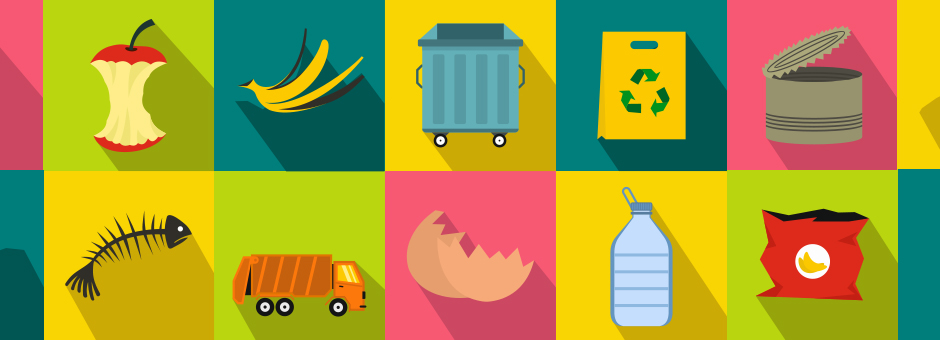
The San Diego County Board of Supervisors has proclaimed the week of March 5 – March 9, 2018 as Food Waste Prevention Week. In partnership with the San Diego Food System Alliance and the state of California, the Live Well San Diego Food System Initiative encourages you to take steps to reduce food waste.
Did you know that up to 40% of the food in the United States goes uneaten? CalRecycle estimates that Californians throw away almost 6 million pounds of food each year. That food waste amounts to 18% of all landfill use in thestate. In contrast, nearly 5 million Californians are “food insecure,” meaning that they lack consistent access to sufficient, safe and nutritious food to lead a healthy, active life.
Food waste prevention also aligns with California’s 75 Percent Isnitiative to significantly reduce solid waste in landfills by 2020. The food in landfills decomposes and releases methane, a greenhouse gas 80 times stronger than CO2 at trapping heat that contributes to climate change. Money spent on energy, water, fertilizer, land, production, storage, transportation, and retail food purchases is lost when food goes unused. A family of four spends, on average, $1,500 per year toward 1,000 pounds of uneaten food. It is imperative that everyone takes part in diverting usable food from landfills to reduce greenhouse gas emissions and protect shared resources.
Here are a few tips for how we can all reduce food waste.
Plan and Shop Wisely
Before you run to the market, plan menus and meals ahead of time. Figure out what ingredients you have and what you’ll need. It will save you money and time, and cut down on having to toss out food that goes bad before you eat it. SaveTheFood.com has a “Guest-imater” that can help you calculate how much food you need to prepare, based on how many people you’re serving and how much they typically eat. It can even calculate having leftovers if you want them!
Freeze or Find Ways to Re-use Leftovers
Even the best planners end up with leftovers sometimes. But you don’t have to let them languish in the fridge until they go bad. You can freeze leftovers to use in future meals. You can pack them in to-go containers for lunches. Or, you can re-think your leftovers as ingredients to be used in different meals. Leftover pasta and cooked vegetables can help make a delicious frittata. Leftover rice, meat and vegetables can make a great soup, burrito or casserole.
Got Fruit Trees to Glean?
Do the fruit trees in your yard churn out more fruit than you and your family can eat? Don’t let it go to waste. Feeding San Diego and the San Diego Food System Alliance have links to “gleaner” groups that can collect your extra crop and feed someone else’s family.
Compost It!
When you do end up with leftover food and/or food scraps, a lot of it can go into a compost or worm bin instead of ending up in landfill. Composting can turn that leftover food into healthy organic compost and fertilizer that can re-inject helpful nutrients and organisms back into your garden or lawn’s soil. Using compost can also cut water use, improve crop production and save gardeners money by not having to buy soil amendments. Learn what can go into your compost.
Visit SaveTheFood.com
The website has tips galore, from “Five Ways to Revive Food,” to “10 Easy Tips for Meal Planning,” and “Cooking with Food Scraps.” It’s also filled with information about how to shop for, cook and store food.
Taking steps to be aware of and prevent food waste has the power to reduce waste, feed people rather than landfills, combat climate change and save economically. Working together, we can Save The Food in San Diego.
